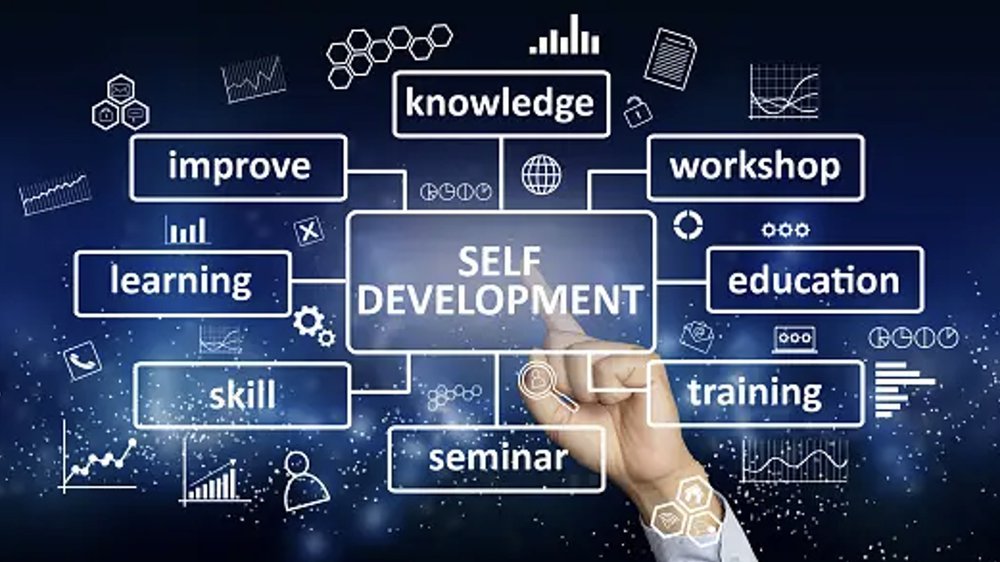We’ve heard plenty about how AI is disrupting education: 30 percent of college students report using ChatGPT for written assignments. Khan Academy is testing out AI “tutors.” Schools are teaching students how to write prompts for generative AI.
But have you considered what AI means for learning in the workplace? The corporate learning and development (L&D) community is abuzz with speculation about how the rise of generative AI technologies will transform corporate learning. A lot is already happening.
Some of my peers are worried we’ll all be out of a job five years from now. Not me: I’m thrilled to be in the driver’s seat as AI transforms learning for workers in every industry at every phase of their careers. At the end of the day, your job will not be replaced by AI; you will be replaced by someone else who is using AI if you are not using it first.
Here are some real-world examples of how you can start using AI to upskill and reskill your workforce faster and in more strategic, personalized, and engaging ways.
Deliver better content, faster
Earlier this year, I attended Learning Technologies in London, one of our biggest industry conferences. I returned with the realization that everyone was speculating about whether L&D departments would even exist in the future. Will we need to “create” content at all?
My answer is yes; people will always spearhead content creation. Generative AI is no match for human creativity and ingenuity. Instead, it’s a tool to streamline the menial tasks that take up so much of our time and energy.
Think of how the most time-consuming part of creating a presentation isn’t figuring out the flow or takeaways: it’s designing the Power Point. In addition to creating text and visuals (and even music), generative AI can take care of tasks like translations and converting text to speech – making accessibility a reality.
Generative AI also solves the problem I call “blank page syndrome.” When you don’t know where to start, ask ChatGPT a question and see what it suggests. You can ask that same question a dozen different ways and get a dozen different threads you can expound on.
As creators begin experimenting with AI, they already see dramatic time savings. In a six-week pilot, Deloitte developers worked 20% faster using generative AI to write code. Content writers report cutting research and writing time dramatically - up to 80% in some cases. One filmmaker mentions using AI to generate mood boards, an essential step in establishing the concept of a project, in minutes rather than hours.
AI isn’t going to automate away our jobs. It’s going to automate away the tedium.
Meet learners wherever they are
Being able to deliver more content faster is especially important as AI creates massive demand for upskilling and reskilling. For example, Intuit recently launched an apprenticeship program to reskill employees as the company leans further into adopting AI.
AI makes it easier for us to engage learners in their daily workflow. I can quickly build an AI chatbot that a worker can interact with conversationally to gain new skills and knowledge in the context of their daily tasks.
AI can even gather feedback, assess what a student has learned, and tailor the next lesson accordingly. By capturing such data on an ongoing basis, AI also helps enterprises assess the overall performance of their learning programs. Guess what this leads to? Better learning programs and better learning experiences.
AI even allows us to easily adapt content to individuals’ diverse learning preferences and needs. Instead of being forced to create the same lesson from scratch in multiple formats or for various experience levels, we can use AI to adapt content.
Because of how AI learns – based on how many people use the system – an organization can be in a state of ongoing strategy and program improvement. This is learning at a whole different scale, in a completely different way than what we’re used to.
Make learning more interactive and engaging
AI makes it easier for content creators to work in formats that have historically required specialized skills, such as illustration, motion design, or video production. Not only can L&D providers work faster, enterprises can also more easily achieve the results associated with engaging learning formats.
We know that, for example, employees are 75% more likely to watch a video than to read documents. Walmart employees who took a virtual reality (VR)-based training course scored higher than traditionally trained employees 70% of the time. During the pandemic, when PepsiCo trainees began failing tests after classes went virtual, PepsiCo built a custom training course in the popular Minecraft game environment. Success rates jumped back up, as did satisfaction scores.
AI makes high-effort, high-reward training formats accessible for companies with more limited resources. For example, at ELB Learning, we have a new feature in CenarioVR that lets users create 360-degree digital images by entering keywords. Thanks to generative AI, instructional designers can now create immersive experiences that used to require significant time and resources.
One hospital leveraged immersive training in their organization and delivered a year’s worth of training in just one day. By creating a virtual reality simulation, medical trainees learned and practiced procedures without real-life repercussions, giving them the confidence to learn in a comfortable environment with fewer distractions to sway their attention.
The future of learning is already here. Let’s embrace it.
AI poses risks, but engineers are already developing tools to detect plagiarism and fact-check content. I’m confident that our industry can mitigate these risks as we embrace this exciting future, and I urge learning leaders to do the same.
Years ago, I had a physics professor who banned calculators in his classroom. He was worried about what we would do if the power went out, so he made us use slide rulers.
Does this make any sense to you? Me neither. Yet I’ve recently met many AI skeptics stuck in this similar mindset of fear.
We didn’t go back to the slide rule because we recognized that calculators made us better, faster, and more robust. Now that we’ve seen what AI can do for us as learning professionals and learners, let’s forget about our old working methods and em
About the author

As Chief Technology Officer for ELB Learning, John Blackmon is responsible for all aspects of development and strategy for the company’s eLearning products. Prior to joining ELB Learning, John was Co-Founder and CEO of Trivantis, where he created the flagship products, Lectora and CenarioVR. John was also Co-Founder and Lead Engineer at BocaSoft, a company that created various software utilities for the OS/2 operating system. His career started at Electronic Data Systems, where he designed a number of automatic identification systems with various technologies for plant floor applications at General Motors, followed by time spent at IBM working on plant floor data collection, and then design work on the OS/2 operating system. At IBM, John was awarded a patent for his work on seamlessly running Windows applications under the OS/2 operating system. John regularly speaks at various eLearning industry events on topics ranging from xAPI to VR, and has a patent pending on his work for Responsive Course Design. He also received a Bachelor of Science in Electrical Engineering from Florida Institute of Technology.











